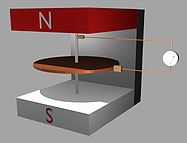Yes.Putting potential principal working aside, such as at 0.0001% efficiency or 0.0001W power output, the considerations leave the scam as an only option for what is demonstrated in the videos. Incidentally, recent Popular Photography has a discussion of how to initiate a project on Kickstarter. The need to convince the Kickstarter to take you on might be one reason for such desperate measures as making a fake prototype.
Though their design alone is cool. They could have just give you some magnets to mount your spokes near the rim and made this all plausible -- not as neat as promised, but real world. Instead, they've promised a product that that can never be delivered (unless I've missed something major here.)
Or, as I mentioned before ... maybe they do think it's possible, it's just that they need the money first to get to that point, and so they make fake prototypes to reach that goal? I don't know.
Their investors will be pissed if they've paid $200+ dollars for a cool light and either get 1) nothing or 2) a light that isn't anywhere near as cool as promised. And given the dollar figures involved if this gets funded ... these people then deserve to go to prison for fraud.
(Of course, before all that could happen, the thing would need to get funded, they get their money, they get some time to deliver on their promise and then they fail to do so to some degree. Given how fast their dollar figure has increased, it seems like they will reach their goal to get funded if something doesn't happen before that.)




